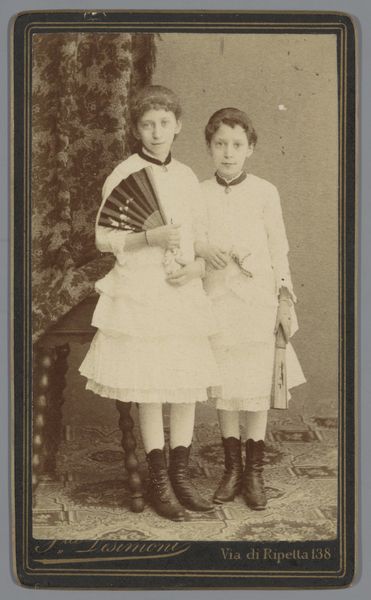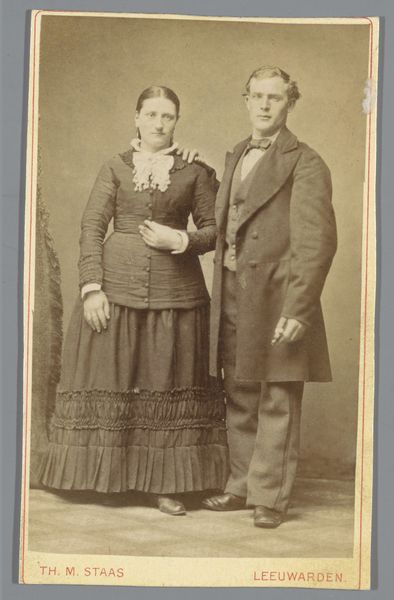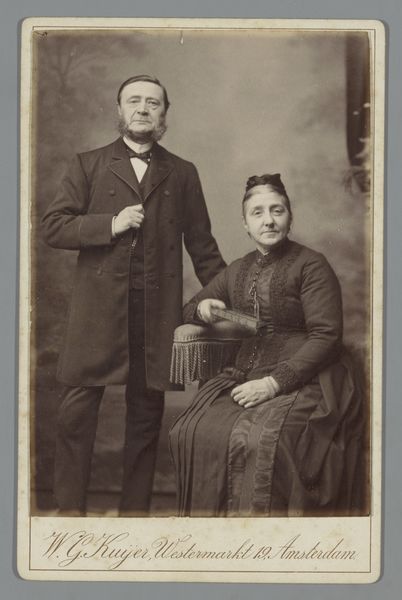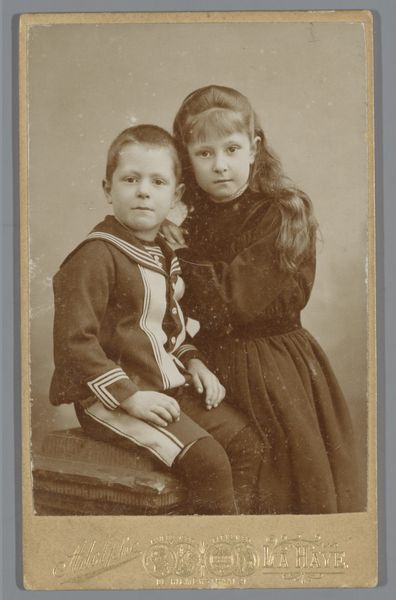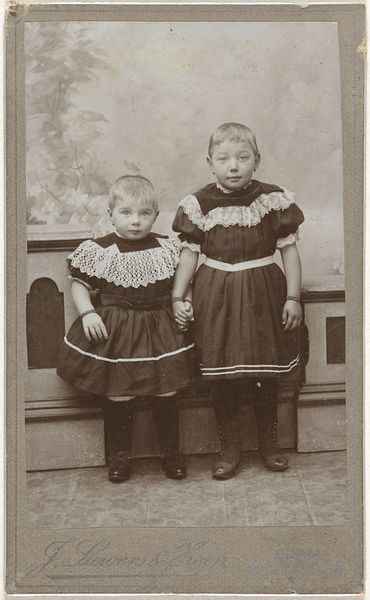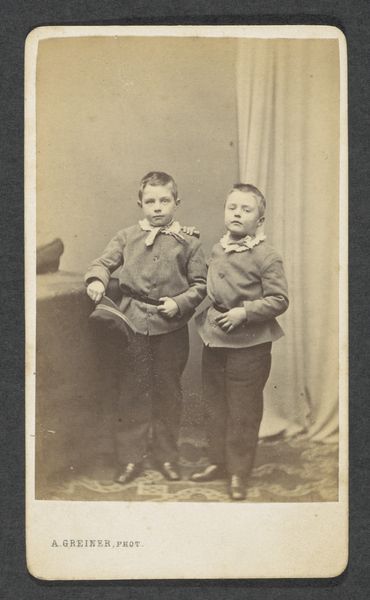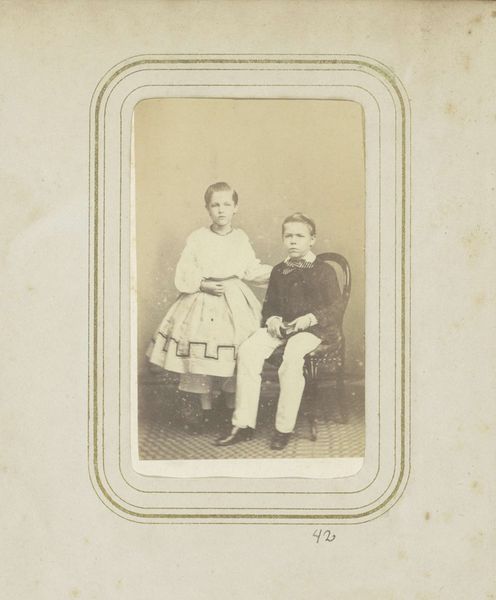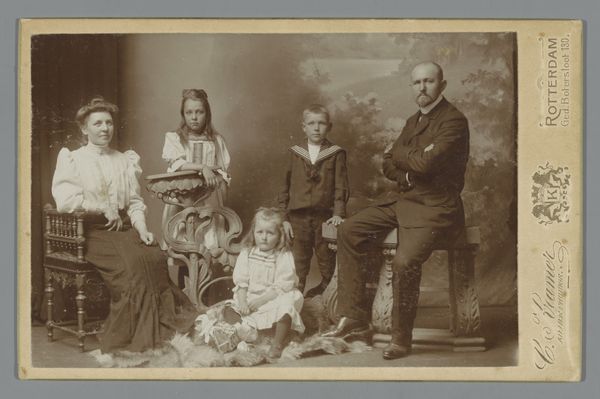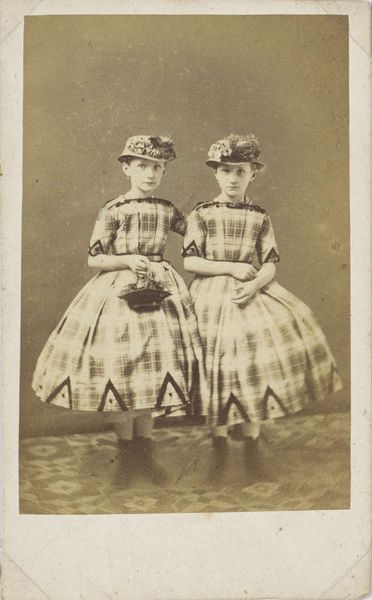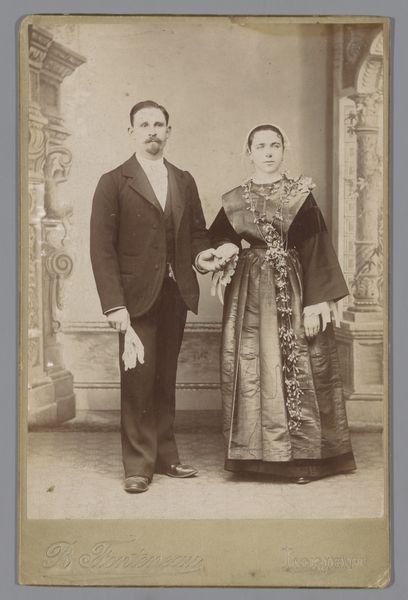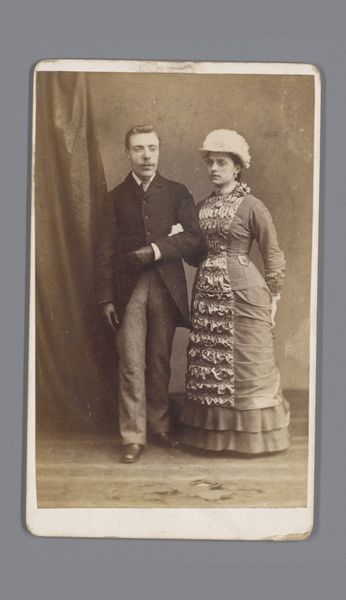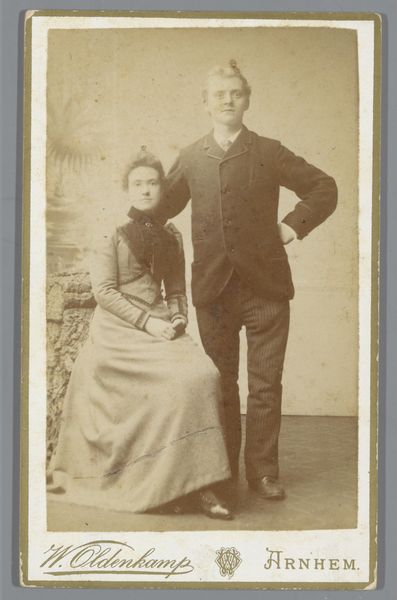
Isaac and Rosa, Emancipated Slave Children, from the Free Schools of Louisiana 1863 - 1864
0:00
0:00
photography, collotype, albumen-print
#
portrait
#
african-art
#
photography
#
historical photography
#
collotype
#
portrait reference
#
19th century
#
genre-painting
#
albumen-print
#
realism
Dimensions: image/sheet: 9 × 5.4 cm (3 9/16 × 2 1/8 in.) mount: 10.9 × 6.1 cm (4 5/16 × 2 3/8 in.)
Copyright: National Gallery of Art: CC0 1.0
Editor: Here we have Myron H. Kimball's collotype photograph, "Isaac and Rosa, Emancipated Slave Children, from the Free Schools of Louisiana," taken between 1863 and 1864. It's striking how formally they're posed, almost like miniature adults, but their eyes tell a different story. What do you see in this piece? Curator: This photograph, taken during the Civil War, represents a very deliberate effort to shape public perception of emancipation. The "Free Schools" were part of a Northern effort to demonstrate the potential of formerly enslaved people, presenting them as capable of integration into society. Note the very specific description inscribed under the image; its strategic intent is unmistakable. Editor: So, it’s less about a genuine snapshot and more about…propaganda? Curator: It's definitely a constructed image. Consider the children's clothing, which seems intended to project respectability and readiness for education. The image circulated widely as a carte de visite, entering homes and shaping opinions about Reconstruction. Do you see how the format itself contributed to its social and political function? Editor: I see what you mean. The circulation made it a very effective, yet subtle, tool for swaying public opinion at a particularly contentious moment. It feels staged, yet carries the weight of its historical context. Curator: Exactly. Its effectiveness lies in presenting a palatable image of formerly enslaved children, downplaying the brutal realities of slavery. While ostensibly celebrating emancipation, it simultaneously sanitizes the past to promote a specific vision for the future. And now that you consider the historical role, how do you perceive the photographer’s public role? Editor: It's a reminder that art isn't created in a vacuum, it's shaped by social forces and in turn shapes them. Curator: Precisely! And understanding this interplay is key to unlocking art's full significance.
Comments
No comments
Be the first to comment and join the conversation on the ultimate creative platform.
